System Electricity

How does a home energy audit help in saving on electricity ?
A home energy audit helps identify inefficiencies and suggests upgrades, leading to electricity savings. It includes checks on insulation, air leakage, ductwork, appliance efficiency, and lighting systems. It also promotes behavioral changes and renewable energy options, providing a prioritized plan for improvements along with information on financial incentives.

How do tidal and wave energy systems generate electricity ?
Tidal and wave energy systems are renewable sources of energy that harness the power of ocean movements to generate electricity. These systems work on the principle of converting the kinetic energy present in the tides and waves into electrical energy, which can then be used for various applications. Tidal barrages create a difference in water level between two sides of a barrage, built across an estuary or bay with significant tidal range. As the tide rises, water flows through turbines located within the barrage, generating electricity. When the tide goes out, the process is reversed, with water flowing back through the turbines in the opposite direction, generating additional electricity. Tidal stream systems use underwater turbines placed in areas where tidal currents are strong. Unlike tidal barrages, tidal stream systems do not require large infrastructure and can be deployed in various locations where strong tidal currents exist. Wave Energy Converters (WECs) are devices designed to capture the energy from ocean waves and convert it into electricity. There are several types of WECs, including point absorbers, attenuators, and terminators, each working slightly differently but sharing the same goal of harnessing wave energy.
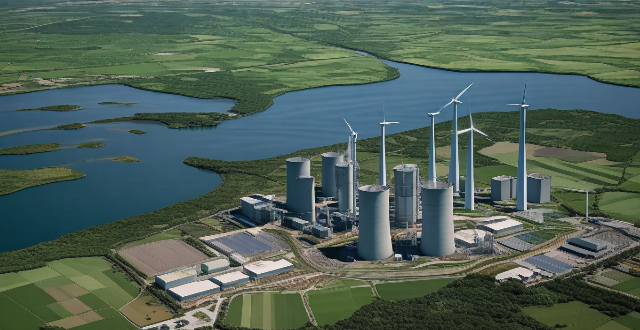
How is the demand for electricity affecting the energy market ?
The demand for electricity is a crucial factor that affects the energy market. As the world becomes more reliant on electricity, the demand for it continues to grow. This increased demand has significant implications for the energy market, including the types of energy sources used, the cost of electricity, and the environmental impact of energy production. The key points include population growth, economic development, technological advancements, diversification of energy sources, investment in infrastructure, cost of electricity, environmental impact, renewable energy sources, energy efficiency, smart grid technology, and electric vehicles. By considering sustainable energy solutions, we can work towards a more sustainable and equitable energy future.

What impact do energy-efficient appliances have on reducing electricity bills ?
Energy-efficient appliances can significantly reduce electricity bills by using less energy and incorporating smart features. These appliances may have higher upfront costs, but the long-term cost savings often outweigh the initial investment. Additionally, energy-efficient appliances contribute to a smaller carbon footprint and conserve energy resources, promoting sustainability. Overall, these appliances offer financial and environmental benefits for conscious consumers.

How does a distributed energy system work ?
A distributed energy system (DES) is a decentralized approach to power generation and distribution that utilizes renewable energy sources, energy storage devices, and smart grid technologies. The system works by generating electricity locally from renewable sources, storing excess energy for later use, and distributing power efficiently within a local area. This setup enhances efficiency, reliability, and sustainability while potentially reducing costs. DESs offer flexibility and adaptability to changing energy needs and technological advancements, positioning them as a crucial element in the future of energy infrastructure.
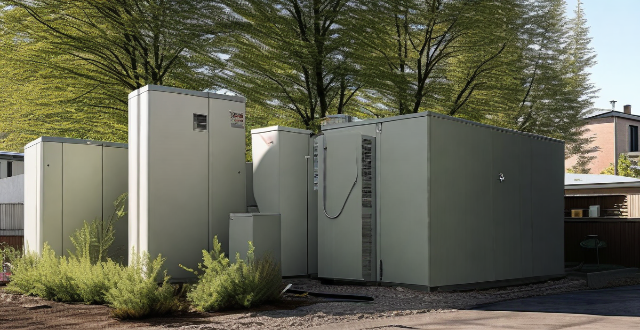
What is a distributed energy system ?
Distributed energy systems (DES) are integrated systems that generate, store, and manage energy near the point of consumption. They typically include renewable energy sources, energy storage devices, and control systems. The primary goal is to optimize energy production and consumption while minimizing environmental impact and enhancing energy security. Key features of DES include decentralized generation, renewable energy sources, energy storage, intelligent control systems, flexibility, and scalability. Benefits of DES include increased energy efficiency, improved reliability, reduced environmental impact, enhanced energy independence, and cost savings. Examples of DES include residential solar PV systems, commercial buildings with cogeneration, microgrids, and community energy projects.

How long does it take for an energy-efficient lighting system to pay for itself ?
The article discusses the financial benefits of investing in energy-efficient lighting systems and how long it takes for such an investment to pay off. It highlights that the payback period depends on several factors, including the cost of the system, energy savings achieved, usage patterns, and electricity rates. The article provides a step-by-step guide to calculate the payback period and offers an example calculation. Overall, the article emphasizes the long-term financial advantages of adopting energy-efficient lighting solutions.
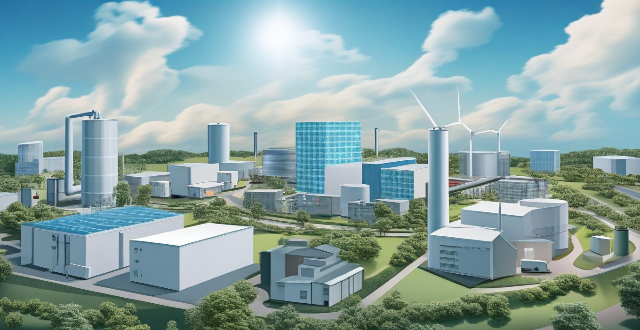
What are the benefits of using a distributed energy system ?
Distributed energy systems (DES) have become increasingly popular due to their numerous benefits. These systems can include solar panels, wind turbines, micro-hydro plants, and other renewable energy sources. The key benefits of using a distributed energy system are increased energy efficiency, lower energy costs, improved reliability and resilience, environmental sustainability, encouragement of local economy and job creation, promotion of energy independence and security, and flexibility and scalability. Adopting a distributed energy system brings numerous benefits ranging from increased efficiency and cost savings to improved reliability, environmental sustainability, economic development, and energy security.
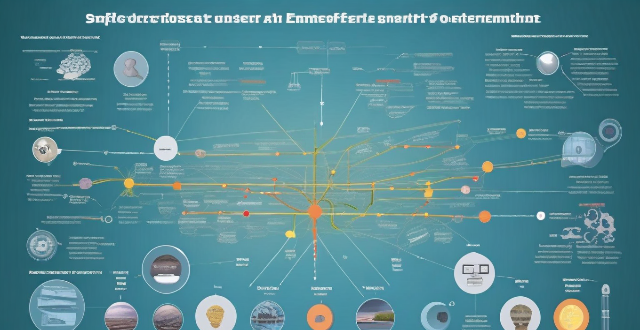
What are the costs associated with implementing a distributed energy system ?
This article discusses the different types of costs associated with implementing a distributed energy system, including initial investment costs, operational costs, and energy costs. It also emphasizes the importance of carefully considering these costs before making any decisions about whether or not to invest in such a system.

How much does it cost to install a solar panel system ?
The cost of installing a solar panel system varies depending on the size, type of panels used, and installation location. Small residential systems typically range from $15,000 to $25,000 before tax credits or incentives, while medium to large residential systems can cost between $25,000 to $40,000. Commercial systems can vary greatly in size and cost. Monocrystalline silicon panels are the most efficient and expensive option, while thin-film solar panels are the least expensive but also less efficient. Rooftop installations are generally more expensive than ground-mounted installations. Additional costs include inverters, batteries, and installation fees. It is important to consult with a reputable solar installer for an accurate estimate based on specific needs and circumstances.

What are the benefits of using a combination motor drive system ?
Combination motor drive systems offer benefits such as improved efficiency, increased reliability, flexibility, and enhanced control. These systems combine the advantages of different types of motors to create a more efficient and reliable drive system. They are ideal for a wide range of applications and can help businesses save money on energy costs while reducing downtime and maintenance requirements.

Can you explain the difference between photovoltaic and solar thermal energy ?
Solar energy harnesses the power of the sun to generate electricity or heat. Two major categories are photovoltaic (PV) and solar thermal systems, which differ in their conversion processes, applications, storage capabilities, efficiencies, and costs. PV systems convert sunlight directly into electricity using semiconductor materials like silicon, while solar thermal systems capture the sun's heat to warm a fluid, usually water or air, which then provides heat or generates electricity. PV is mainly used for generating electricity, and solar thermal is used for both heating and electricity generation. Solar thermal systems can more readily incorporate thermal storage solutions, while PV systems typically require battery storage for off-grid applications. The cost and affordability depend on the specific application and location, with PV becoming increasingly competitive in recent years.
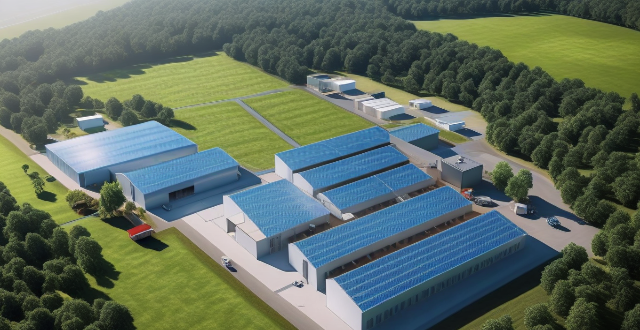
What are some examples of distributed energy systems ?
Distributed energy systems (DES) are small-scale power generation units located close to end-users, offering benefits like increased energy efficiency and reduced environmental impact. Examples include solar PV systems, wind turbines, fuel cells, and microgrids. These systems can operate independently or connect to the main power grid. Solar PV systems convert sunlight into electricity using silicon cells, while wind turbines harness wind's kinetic energy. Fuel cells generate electricity through a chemical reaction of hydrogen and oxygen. Microgrids are localized groups of interconnected loads and distributed energy resources that can operate independently from the main power grid. DES contribute to a more sustainable future by improving energy efficiency, reducing environmental impact, and enhancing electricity supply reliability.

How much money can I save by switching to an energy-efficient lighting system ?
Switching to an energy-efficient lighting system can result in significant cost savings over time, depending on several factors such as the type of lighting system currently used, the size of the space, and the hours of operation. Comparing the costs of different lighting systems reveals that LED bulbs offer the lowest operating costs due to their minimal energy consumption. Switching to LED bulbs can also provide other benefits such as reduced environmental impact, longer lifespan, improved light quality, safety, and reliability.

How do I choose the right energy-efficient lighting system for my needs ?
Choosing the right energy-efficient lighting system involves assessing your needs, considering options like LED and solar lighting, evaluating energy efficiency ratings, and factoring in maintenance costs.

How does solar energy work ?
Solar energy is generated through the use of solar panels containing photovoltaic cells, which convert sunlight into electricity via the photovoltaic effect. This process involves absorbing sunlight, exciting electrons to a higher energy level, generating an electrical current, collecting it, and converting it into usable AC electricity. Solar energy is renewable, sustainable, cost-effective, and environmentally friendly, but its effectiveness can be reduced by weather conditions, and it requires additional equipment for energy storage. Despite high upfront costs, solar energy systems can lead to long-term savings on utility bills.

What are the basic principles of electrical safety ?
Electrical safety is crucial in daily life, especially with modern technology. Basic principles include understanding electricity, maintaining equipment, using appropriate tools, avoiding direct contact with electricity, keeping away from water, following proper wiring practices, being cautious with extension cords, checking for overheating, and knowing your limitations. Following these principles can prevent accidents and ensure safe use of electrical devices.

What is an ecological tax system and how does it work ?
An ecological tax system is a framework designed to promote environmental sustainability by modifying tax structures to encourage eco-friendly behaviors and discourage activities that harm the environment. The primary goal of such a system is to internalize the external costs of pollution and resource depletion, thereby making environmentally harmful practices more expensive and sustainable practices more economically attractive. At the core of an ecological tax system are Pigouvian taxes, named after the economist Arthur Cecil Pigou. These taxes are levied on activities that generate negative externalities, such as pollution. By imposing a tax equal to the marginal social damage caused by these activities, the government can correct market failures where the private costs to producers do not reflect the true social costs. This encourages polluters to reduce their emissions or shift towards cleaner technologies. In addition to taxes on negative externalities, ecological tax systems often include subsidies for positive environmental behaviors. For example, governments might offer tax credits or rebates for renewable energy installations, green technology adoption, or energy efficiency improvements. These incentives make it financially advantageous for individuals and businesses to adopt sustainable practices. An ecological tax system may also involve revenue-neutral tax reform, where increases in environmental taxes are offset by reductions in other taxes, such as income or payroll taxes. This approach aims to make the overall tax burden on society constant while encouraging environmentally friendly behaviors. Feed-in tariffs (FiTs) are another component of some ecological tax systems. These are long-term contracts guaranteeing renewable energy producers a fixed price for the electricity they feed into the grid. FiTs provide a stable income for renewable energy projects, reducing investment risk and promoting the development of clean energy sources. Carbon pricing mechanisms, such as carbon taxes or cap-and-trade systems, are integral parts of many ecological tax systems. These policies put a price on carbon emissions, making it more expensive for companies and consumers to use fossil fuels. This encourages a shift towards lower-carbon alternatives and supports investments in carbon capture and storage technologies. Some ecological tax systems apply differentiated taxes based on the environmental impact of products or services. For instance, gasoline taxes might be higher for fuels with a greater carbon content, promoting the use of cleaner burning fuels. Similarly, taxes on waste disposal could be adjusted based on the type of waste and its potential environmental harm. While the concept of an ecological tax system is straightforward, implementation faces several challenges: - Political Will: Governments must be willing to prioritize environmental concerns over short-term political gains. - Economic Impact: There's a need to balance environmental goals with economic growth and job creation. - Equity Considerations: Policies should not disproportionately burden low-income groups or exacerbate social inequalities. - International Cooperation: Many environmental issues are global, requiring coordinated international efforts. Despite these challenges, implementing an ecological tax system offers numerous benefits: - Environmental Protection: It directly addresses pollution and resource depletion. - Market Efficiency: It corrects market failures related to environmental externalities. - Innovation Stimulus: It encourages research and development of green technologies. - Public Health Improvements: Reduced pollution leads to better health outcomes. - Sustainable Economic Growth: It fosters industries that are sustainable in the long run. In summary, an ecological tax system is a comprehensive approach to integrating environmental considerations into fiscal policy, aiming to promote sustainable development through a mix of taxes, subsidies, and regulatory measures.

How can individuals participate in a carbon credit system ?
Carbon credit systems enable individuals to participate in reducing greenhouse gas emissions by buying, selling, or supporting carbon offsets. Individuals can offset their own carbon footprint by purchasing credits from verified projects, sell credits generated from their sustainable projects, or support the growth of carbon credit initiatives through advocacy and investment. Participation in these systems is a significant step towards combating climate change and fostering a more sustainable environment.

How can I install a distributed energy system in my home or business ?
Installing a Distributed Energy System (DES) in your home or business can significantly reduce reliance on the grid and provide financial savings. The process involves assessing energy needs, site evaluation, financial analysis, system design, permitting, installation, and maintenance. Choosing the right technology, sizing the system appropriately, and selecting quality equipment with certified installers are crucial steps. Permitting includes checking local regulations and coordinating with the utility for interconnection. Installation involves mounting equipment, electrical connections, and system checks. Maintenance ensures optimal performance through cleaning, inspections, and performance tracking. This investment requires careful planning but offers substantial rewards.

What happens if my home security system fails during a power outage ?
### What happens if my home security system fails during a power outage? **Scenario Overview:** During a power outage, the functionality of your home security system depends on its type and configuration. Here's what typically happens: #### Battery Backup Systems - **Immediate Shift to Battery Power:** Modern systems switch automatically to battery backup during outages. - **Notification to Homeowner:** Some systems alert homeowners when they switch to battery power. - **Reduced Functionality:** To conserve battery life, certain features like live video streaming might be reduced or turned off. #### Non-Battery Backup Systems - **Loss of Power Means Loss of Function:** Without a backup, the system stops working, leaving your home unmonitored. - **Potential for False Alarms:** Sudden power loss can sometimes trigger false alarms as systems shut down. - **Risk of Unauthorized Access:** With no active security, your home could be vulnerable to break-ins. #### Cellular-Based Systems - **Continued Operation:** Systems that use cellular signals for communication often keep working since they don’t rely on home electricity. - **Possible Data Usage Increase:** More frequent status updates or reconnection attempts could increase data usage. #### Smart Home Integrations - **Dependent on Hub Power Source:** Devices integrated with your security system may rely on the hub’s power source. If the hub has a battery backup, it continues to function; otherwise, it's affected by the outage. - **Possibility of Remote Access:** You might still monitor and manage your system remotely through a smartphone or other device. #### Mitigation Strategies To ensure your home remains secure during a power outage: - **Install a Battery Backup:** This keeps your system functional during short outages if it doesn’t have one already. - **Regularly Test Your System:** Include responses to power failures in your tests to ensure expected functionality. - **Invest in a Uninterruptible Power Supply (UPS):** A UPS provides temporary power, extending operation beyond just battery backup. - **Stay Informed About Power Outages:** Being aware of potential outages helps you prepare, such as charging backup batteries beforehand.

How can I reduce my electricity and water bills ?
To reduce electricity and water bills, one should switchTo reduce electricity and water bills, one should switch, adjust habits like turning off install water-saving fixtures, change bathroom habits, optimize garden watering, and be efficient with laundry and dishes.

Can using energy-efficient appliances help cut down electricity consumption ?
Energy-efficient appliances can help cut down electricity consumption by using less power than traditional counterparts, leading to cost savings and environmental benefits. Examples include LED light bulbs, smart thermostats, and energy star certified refrigerators.

How do electric car charging stations work ?
Electric car charging stations are essential facilities for powering electric vehicles, utilizing off-board conductive charging to transfer electricity. They come in three main types based on power output and charging speed: Level 1 (slowest, using standard domestic sockets), Level 2 (faster, requiring special EV charging units), and DC Fast Charging (Level 3, fastest, primarily for highway use). The charging process involves connecting the charger, activating it, transferring power (AC for Level 1&2, DC for Level 3), regulating and monitoring battery charging, and disconnecting once complete. Safety features include GFCIs, temperature monitoring, and smart software. Environmental impact depends on the electricity source; green energy sources enhance sustainability, while fossil fuels reduce benefits. As technology advances, these stations will contribute more significantly to a cleaner transport sector.

How do solar panels impact electricity bills in the long run ?
Solar panels can significantly reduce electricity bills over the long term by reducing energy consumption, increasing self-sufficiency, and taking advantage of net metering programs. While the initial cost of installation can be high, lower operating costs, federal tax credits, and increased home value can help offset these expenses. Additionally, solar panels offer environmental benefits such as reduced carbon emissions and support for renewable energy infrastructure.

How does a multi-motor drive system work ?
The text explains how a multi-motor drive system works, its components, and benefits. It describes the process of power conversion, control signals, motor operation, mechanical transmission, and feedback adjustment in such systems. The advantages include improved efficiency, increased redundancy, and enhanced control.